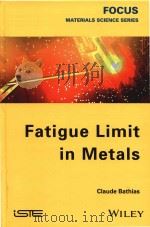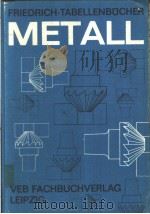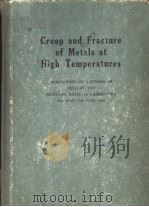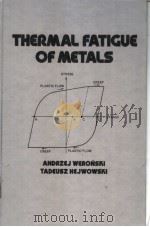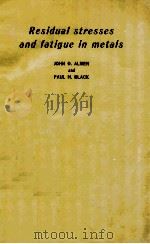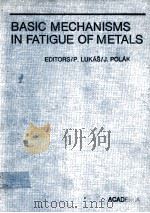《PROCESSES OF CREEP AND FATIGUE IN METALS》
| 作者 | A.J.KENNEDY 编者 |
|---|---|
| 出版 | OLIVER AND BOYD |
| 参考页数 | 480 |
| 出版时间 | 1962(求助前请核对) 目录预览 |
| ISBN号 | 无 — 求助条款 |
| PDF编号 | 813237198(仅供预览,未存储实际文件) |
| 求助格式 | 扫描PDF(若分多册发行,每次仅能受理1册) |
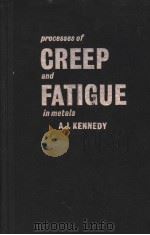
1.INTRODUCTION1
1.1.The phenomenon of fatigue1
1.2.The phenomenon of creep2
1.3.Solid state models4
1.4.Engineering considerations5
2.ANELASTICITY7
2.1.Introduction7
2.2.Behaviour of simple viscoelastic models8
2.3.Boltzmann's superposition principle14
2.4.The standard linear solid17
2.5.The effects of the phase difference between stress and strain in a standard linear solid.Internal friction23
2.6.Descriptions in terms of a distribution of relaxation times30
2.7.Experimental techniques36
2.8.Temperature dependence37
2.9.Internal friction and physical mechanisms41
2.10.Static hysteresis52
2.11.Reference Summary52
3.DISLOCATIONS AND METALLIC STRUCTURE57
3.1.Structural arrangements57
3.2.The nature of dislocations63
3.3.Dislocation mobility70
3.4.The stress fields of dislocations72
3.5.Analysis of the stress distribution around dislocations75
3.6.Forces between dislocations78
3.7.Dislocations in particular crystal structures83
3.8.The generation of dislocations96
3.9.The intersection of dislocations104
3.10.Work-hardening in crystals109
3.11.Faults in the hexagonal structure118
3.12.Summary of single crystal stress-strain characteristics120
3.13.Internal friction and modulus changes121
3.14.Recovery processes123
3.15.Slip bands and substructures128
3.16.Dislocations in ordered alloys130
3.17.Precipitation hardening131
3.18.Dislocations as preferred sites for solute atoms134
3.19.Dislocations and grain boundaries140
3.20.Reference summary:Dislocations and fundamental structure141
4.CREEP147
4.1.The evolution of creep studies147
4.2.Creep empiricism148
4.3.Graham's analysis of creep behaviour154
4.4.Stowell's relation164
4.5.Quasi-empiricism in creep165
4.6.Attempts at a direct identification of the empirical creep components181
4.7.The microstructural changes accompanying deformation by creep193
4.8.Creep and rate-process theory212
4.9.Dora's approach to creep:activation energies215
4.10.Fundamental factors in creep:special theories228
4.11.Weertman's theories of steady-state creep250
4.12.Tertiary creep and rupture261
4.13.The influence of point defects on the creep properties268
4.14.Creep of a dispersion-hardened alloy273
5.FATIGUE281
5.1.The basic empirical facts of fatigue281
5.2.The effect of temperature289
5.3.The relief of internal stresses by an alternating stress293
5.4.Fatigue-hardening295
5.5.Fatigue effects in precipitation-hardening alloys301
5.6.Frequency and time-dependent effects313
5.7.The metallographic features of fatigue326
5.8.Theories of crack nucleation331
5.9.Plastic strain amplitude and fatigue life346
5.10.Crack propagation351
5.11.Fatigue and damping381
5.12.Interference fits in joints and fatigue strength384
5.13.Electron microscopy studies of fatigued material386
5.14.General discussion of fundamental mechanisms387
5.15.Thermal fatigue391
6.COMPLEX CONDITIONS OF STRESS AND TEMPERATURE401
6.1.General introduction401
6.2.Stress changes during creep402
6.3.Temperature changes during creep417
6.4.Some conclusions on stress and temperature cycling effects428
6.5.Fatigue under conditions of varying stress429
6.6.Fatigue under conditions of varying temperature:deformation during fatigue442
6.7.Dynamic stressing—complex effects448
INDEX OF AUTHORS468
INDEX OF SUBJECTS474
1962《PROCESSES OF CREEP AND FATIGUE IN METALS》由于是年代较久的资料都绝版了,几乎不可能购买到实物。如果大家为了学习确实需要,可向博主求助其电子版PDF文件(由A.J.KENNEDY 1962 OLIVER AND BOYD 出版的版本) 。对合法合规的求助,我会当即受理并将下载地址发送给你。
高度相关资料
-
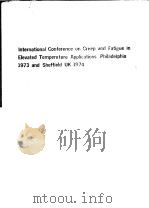
- INTERNATIONAL CONFERENCE ON CREEP AND FATIGUE IN ELEVATED TEMPERATURE APPLICATIONS,PHILADELPHIA 1973
-

- CREEP OF METALS AT HIGH TEMPERATURES
- MILLS & BOON LIMITED
-
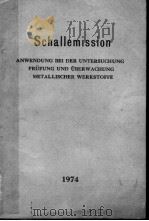
- SCHALLEMISSION
- ADENAUERALLEE
-
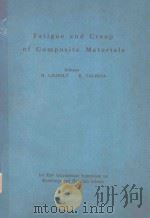
- FATIGUE AND CREEP OF COMPOSITE MATERIALS
- 1982 RISΦ NATIONAL LABORATORY
-
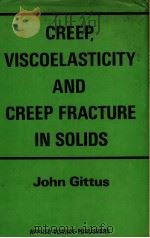
- CREEP,VISCOELASTICITY AND CREEP FRACTURE IN SOLIDS
- 1975 APPLIED SCIENCE PUBLISHERS LTD
-
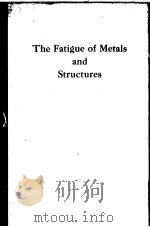
- THE FATIGUE OF METALS AND STRUCTURES
- 1954 PREPARED FOR BUREAU OF AERONAUTICS DEPARTMENT OF THE NAVY
-

- CREEP AND FRACTURE OF METALS AT HIGH TEMPERATURE
- 1955 NATIONAL PHYSICAL LABORATORY
提示:百度云已更名为百度网盘(百度盘),天翼云盘、微盘下载地址……暂未提供。➥ PDF文字可复制化或转WORD
